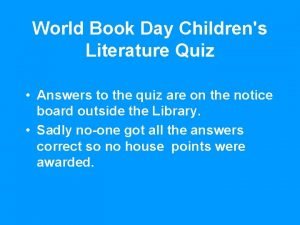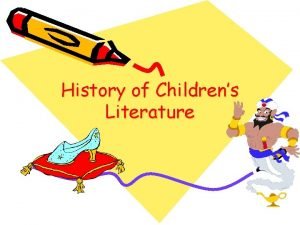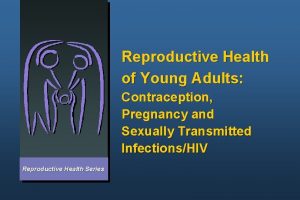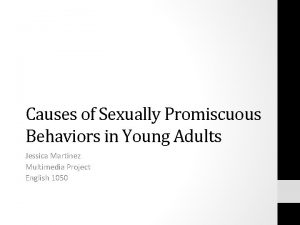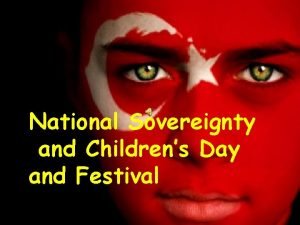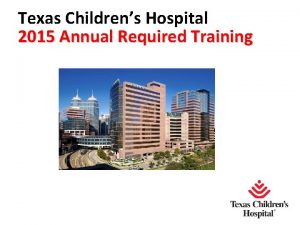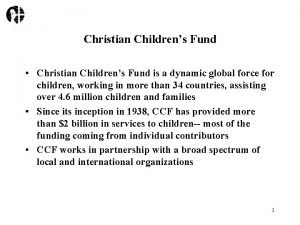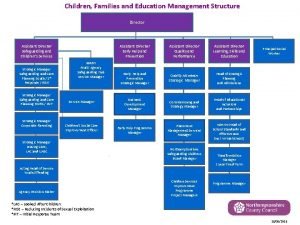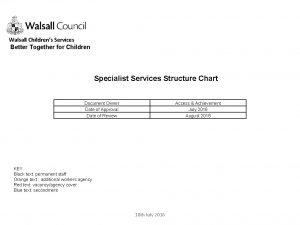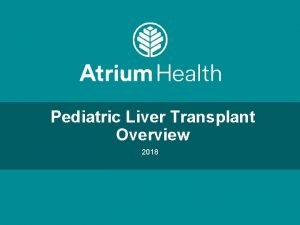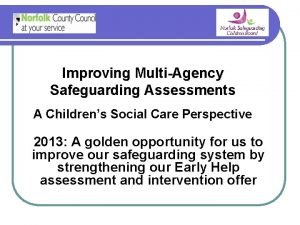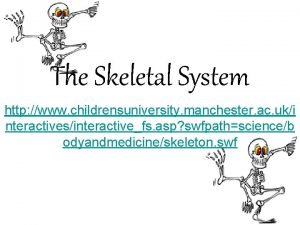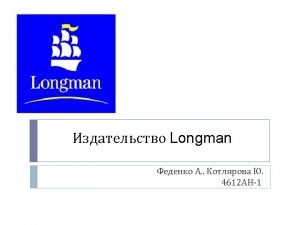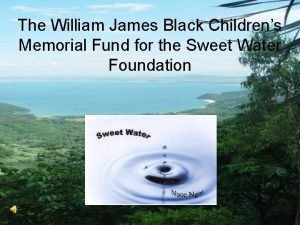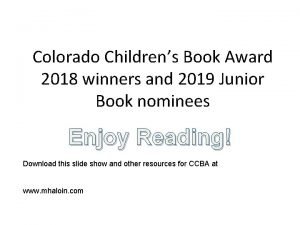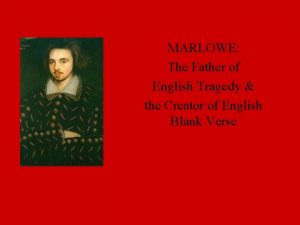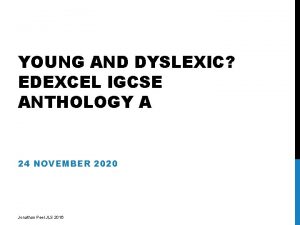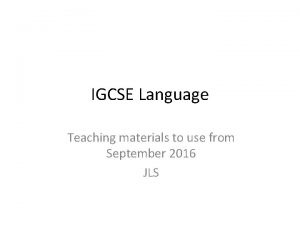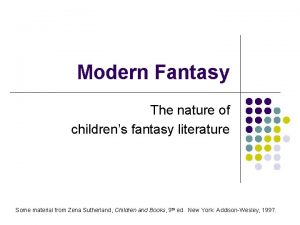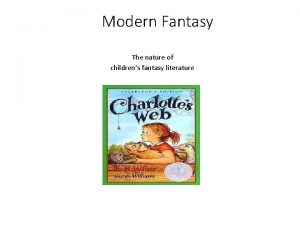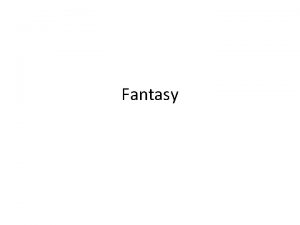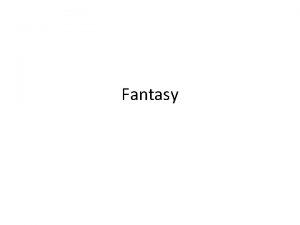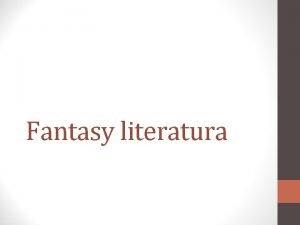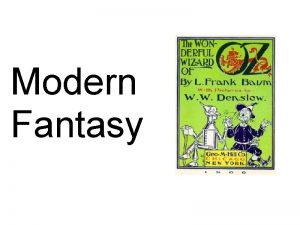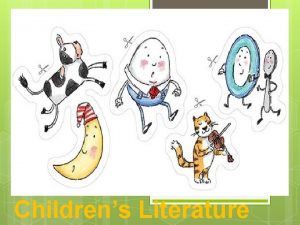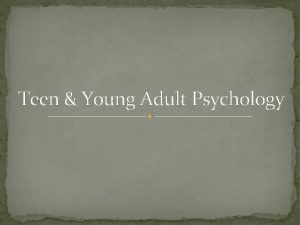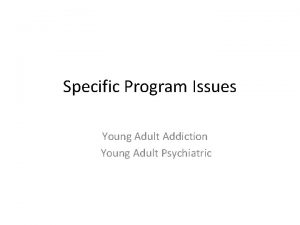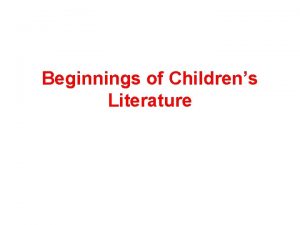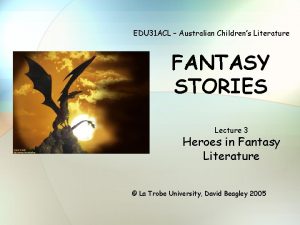Young Adult Literature and Fantasy Childrens Literature English



















- Slides: 19

Young Adult Literature and Fantasy Children’s Literature, English 218 Stephanie Brown

Young Adult Literature and Fantasy Summary: Fairytales and the Oral Tradition, Pictures Books, Middle Grade Books Introduction: What is young adult literature? Young Adult Literature Themes

Fairytales and the Oral Tradition Summary

Summary: Fairytales and the Oral Tradition Fairytales come out of an oral tradition. Andersen, the Grimm Brothers, and Perrault traveled Europe and collected stories. Often, we think of Europe when we think of traditional fairytales, but the first version of Cinderella comes out of an oral tradition passed down in China. The History of Fairytale Stories

Bridging Fairytales and Children’s Novels: Picture Books Children’s novels took on popularity after the Industrial Revolution due to the printing press, a temporary economic growth during the Roaring 20’s, and finally during WWII as a way to keep children calm during drills.

• Elements of a good picture book include: Summary: Picture Books Why are they so important? • Peritextual features (covers, author’s notes, book jackets, title pages, etc. ) • Strong Design (fonts, borders, texts and/or images) • Art (styles, mood, theme, perspective) • Visual Grammar/Literacy (communicating wordlessly where image is meaning)

Summary: Middle Grade Novels Summary

Summary: Middle Grade Novels and Fantasy We tested out theory that middle grade fantasy novels will often have the following elements: Believability The author must first root us in what is real. Careful detail to setting What if JK Rowling’s Hogwarts School of Witchcraft and Wizardry had been described differently? Language is key The authors choice of diction and or strong use of character dialogue can make or break a fantasy novel. Language is also tied to the first element: believability. Consistency The logic of the rules in a story go a long way to maintain believability. The author must be consistent with his or her rules in the story.

What is Young Adult Literature? An Introduction

What is Young Adult Literature? Definition: Young adult literature features characters who are teenagers dealing with some aspect of how to transition from adolescence into adulthood. Like middle grade novels, these books are character-focused; however, themes, mood, plot/action, dialogue, and tone are very different from middle grade.

What is Young Adult Literature? The American Library Association defines young adult reading as books marketed for ages 10 -19. This body of professionals has also identified 1968 as the “birthdate” of this genre of children’s literature.

What is considered the first YA novel? S. E. Hinton’s The Outsiders

Genres of Young Adult Literature Fantasy Science fiction Horror Suspense Realistic fiction There are genres of young adult literature just as we see genres in picture books and middle grade novels. The biggest exclusions are likely animal books and some concept books. Lyric/verse Historical fiction New adult (19 -25 years old)

Young Adult: Selection Criteria 1. A teenaged protagonist 2. First person point of view 3. Adult characters are minor or missing completely 4. A limited number of characters 5. Themes of first love, sex, identity, etc. 6. Slang 7. Detailed physical descriptions 8. Positive or ambiguous resolutions 9. Few subplots (realistic fiction) 10. 200 -800 pages in length

Literature Awards Picture and Middle Grade Books Young Adult Books Caldecott Awards Michael L. Printz Award John Newbery William C. Morris Award Coretta Scott King Boston Globe-Horn Book Award Edgar Allan Poe Best Juvenile Mystery Cybils Award Scott O’Dell Historical Fiction The Bookseller YA Book Award

Young Adult Why is it so different? The difference not only lies in age but primarily in topics. This category “fills an important niche between childhood and adulthood. The themes are also different; YA protagonists must make strong decisions and take higher responsibility in some way. Therefore, themes are different. Thus, the central question is: what is theme?

Theme is the central philosophical idea of a novel, article, or short story. Theme is very different from tone. Tone is the author’s attitude about what he or she writes. In the case of fiction, tone can be the narrator’s attitude and how he/she/it tells the story. Theme, Tone, Mood Finally, theme is also different from mood. Mood is the emotional “color” of a story, and unlike theme, mood can change from paragraph to paragraph, page to page, or chapter by chapter. Mood is often defined by the intense emotions experienced by the characters.

Theme, Tone, and Mood – Literature Circle Activity (Write your answers as a group) Lips Touch Three Times Define themes in the collection of short stories. (You may want to examine each story/novella first to see if there are common themes). How does the overall mood change in each story, and how does this enhance themes of the collection? Finally, what is the tone? How do you think this tone appeals to a teenaged audience? Ash What are themes in this novel? How does the mood change after Ash meets the fairy in the woods? What is the tone of the novel? How does this communicate the character’s growth?

Creative Writing Activity Both young adult novels rely on historical influences rather from the early oral traditions or the mythical creatures of British literature. Take a classic tale of any kind that you know. Change one aspect of the story (similar to how Malinda Lo changes who “Cinderella” falls in love with). Write a first person narrative from the main character introducing him or herself now that you have changed one aspect of this classic tale. Keep in mind tone, slang, mood, themes, and the other aspects of young adult literature we’ve discussed today.
 Characteristics of young adult literature
Characteristics of young adult literature World literature quiz 22
World literature quiz 22 History of childrens literature
History of childrens literature Young adult age range
Young adult age range Promiscuous sexual behavior
Promiscuous sexual behavior National sovereignty and childrens day
National sovereignty and childrens day Texas children's moli
Texas children's moli The christian childrens fund
The christian childrens fund Childrens services
Childrens services Childrens services walsall
Childrens services walsall Levine childrens
Levine childrens Kirklees safeguarding childrens board
Kirklees safeguarding childrens board The childrens university of manchester
The childrens university of manchester Longman children's picture dictionary
Longman children's picture dictionary Black childrens memorial
Black childrens memorial Grades of hemorrhagic shock
Grades of hemorrhagic shock Colorado children's book award
Colorado children's book award Cut is the branch that might have grown explanation
Cut is the branch that might have grown explanation Young and dyslexic structure analysis
Young and dyslexic structure analysis Young and dyslexic poem
Young and dyslexic poem

